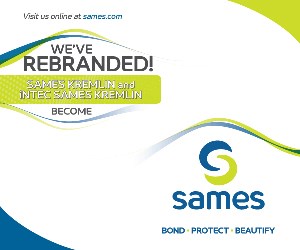For fabricators, the finishing line is just the beginning of a new era in today's market.
The days of simply cutting, bending and welding metal components into assemblies and delivering them to a customer in two to three weeks just don't exist anymore, nor with original equipment manufacturers need tighter turnarounds for their parts.
That means more metal fabricators are looking to control every aspect of the manufacturing process—including finishing. That’s why The Fabricator has team with Products Finishing to bring you this special report on adding a paint or powder coating line to a fabrication shop.
Just how many are involved in painting and powder coating? An e-mail survey of The FABRICATOR readers in 2009 revealed that a little over 33% of the respondents were involved in finishing activities. More than likely, most of these fabricators have a batch booth, where parts are wheeled in on a rack, painted or powder coated, and then rolled into an adjoining oven for curing.
While it may not be as sophisticated as the lines that custom coaters run, it gets the job done for the metal fabricator's customers. After all, most of the finished parts that fabricators deliver are not in need of the same finish applied to the hood of the new Chevrolet Camaro.
This report highlights an example of how some metal fabricators are setting up sophisticated lines like the one at A-1 Fabricators and Finishers outside of Cincinnati, OH. You’ll read how the A-1 owners aren't intimidated by the thought of learning the nuances of cleaning metal parts and applying a quality finish, or dissuaded with the increased scrutiny that would come from local environmental officials. A-1’s customers simply expect their orders delivered on time so they can avoid downtime on their own factory floors. It's a closely choreographed dance of quality parts being delivered in a just-in-time manner to avoid the dreaded evil of excess inventory sitting around waiting to be used.
We also give fabricators a glimpse inside what it takes to get off to a good start: cleaning and pretreatment. If a product demands improved appearance, increased corrosion resistance and enhanced wear resistance, then it begins with cleaning and treating the part correctly before applying a finish.
And since there are always two sides to every good argument, we decided to go to the source when reporting on how fabricators should decide on whether to go with a paint or powder coating line. We sought out industry experts from both sides to give us their insights on what comes with adding either line.
While many fabricators still rely on partners for finishing services, adding their own line might be ‘Step 1’ in the race to becoming a top-notch supplier, along with offering more machining services, increased levels of engineering assistance, on-site inventory management, and anything else a customer might request.
Becoming a ‘one-stop shop’ is the nature of the business these days.
Related Content
-
EPSI is continuing to grow with the acquisition of Custom Rack, based in Euless, Texas.
-
By combining their sales and service capabilities and resources for the U.S. market, the two companies will cover the entire aluminum alloy surface treatment process from pre-treatment to anodizing and coating.
-
Ronatec announces acquisition of ICF, growing its portfolio of offerings for the metal finishing market.











